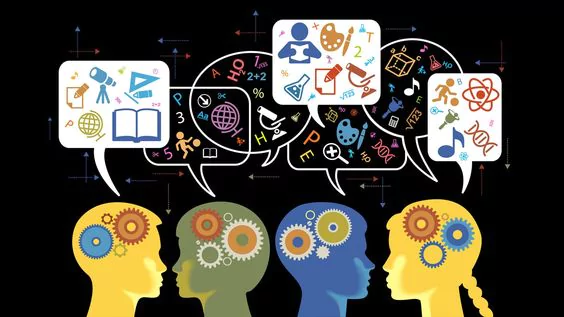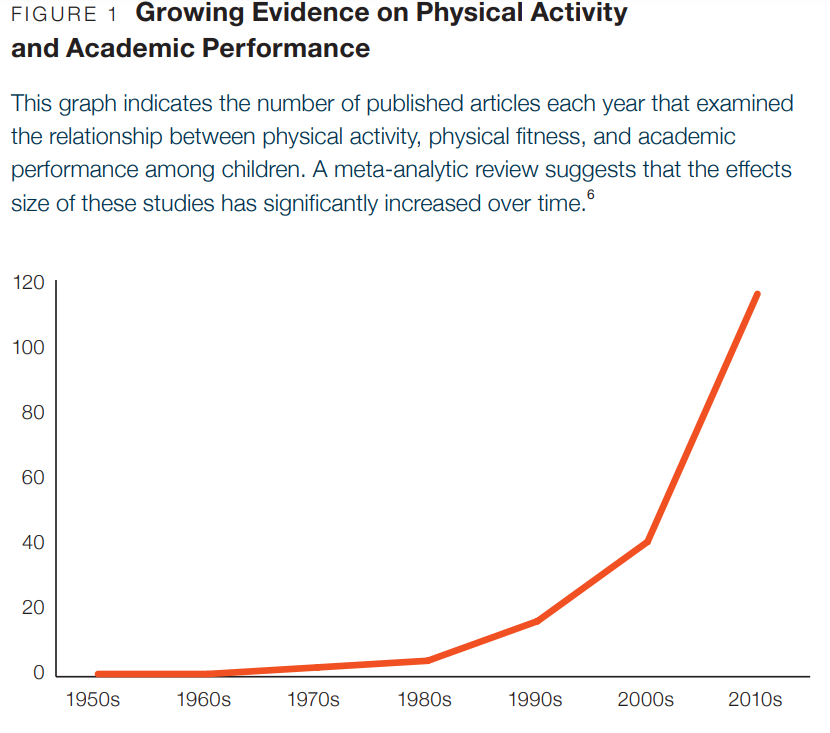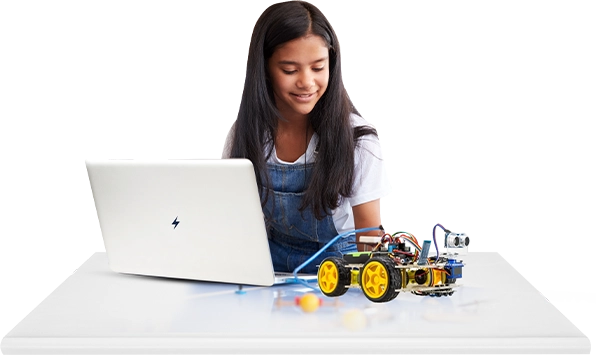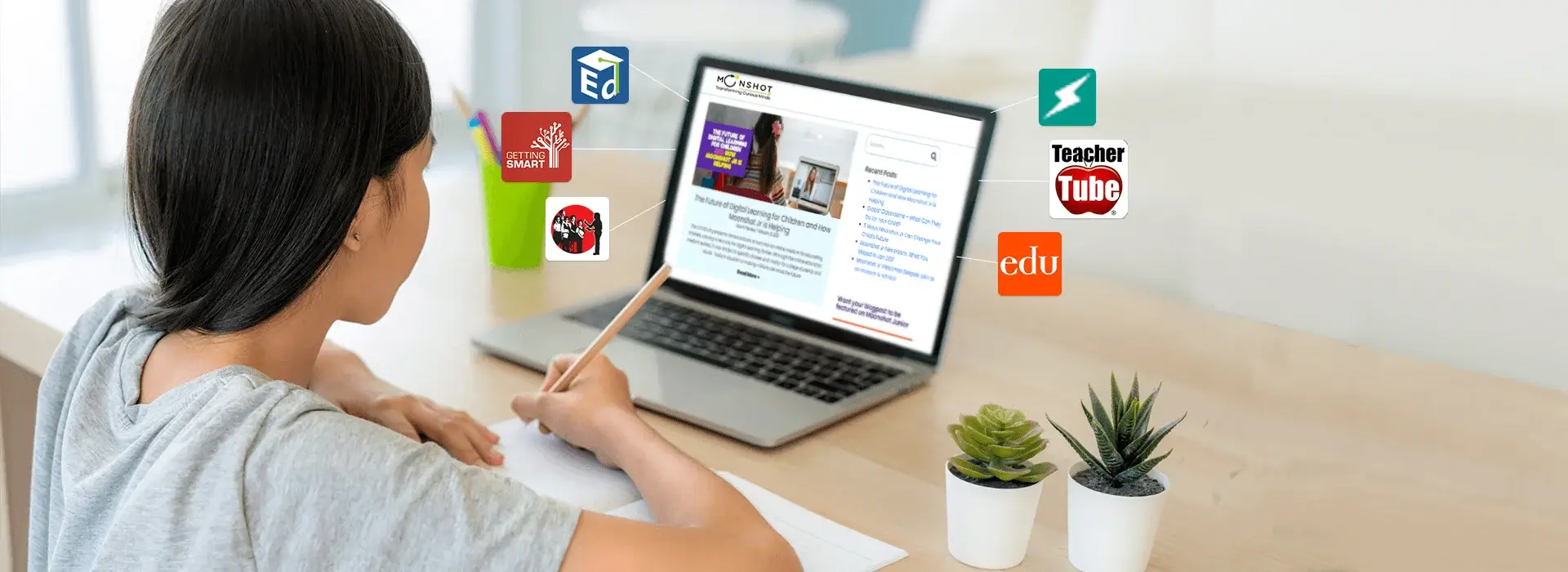
Moonpreneur
Update: This article was last updated on 18th December 2023 to reflect the accuracy and up-to-date information on the page.

Are you aware that you can alter the learning experience of your child and engage their emotions by implementing brain-based learning activities?
Brain-based learning is a way of approaching education, considering how the human brain works. It recognizes different techniques that are more effective for learning, depending on how our brains process and retain information. Designing teaching strategies around these processes can create a more effective and engaging learning experience for kids.
The ultimate goal of brain-based learning is to optimize learning as a whole, considering not just academic knowledge but also student motivation and attention.
Moonpreneur presents the top 12 brain-based learning activities for kids in 2025. Kids can learn and grow intellectually through these activities, which range from mindfulness meditation to outdoor exploration.
1. Mindfulness Meditation:
The body benefits from the movement, and the mind benefits from the stillness.
Paying attention to the present moment without judgment is a component of mindfulness meditation. It entails waking up to one’s thoughts, feelings, and physical sensations and watching them with interest and openness. This practice has numerous advantages, including lowering stress and anxiety, strengthening emotional control, and improving cognitive function.
Mindfulness meditation can be beneficial for kids since it can help them learn how to concentrate, control their emotions, and handle stress. Children who regularly practice mindfulness meditation can enhance their overall well-being and gain essential life skills that will benefit them into adulthood.
2. Aerobic Exercise:
As per the Active Living Research, children engage in developmentally appropriate physical activity, their improved physical fitness can have additional positive effects on academic performance in mathematics, reading, and writing.

Running, swimming, or dancing are examples of aerobic exercise that raises the heart and breathing rates. This particular form of exercise has significantly positive effects on brain function and overall health. It enhances cognitive performance, reduces the likelihood of chronic illnesses, and promotes cardiovascular well-being.
The brain produces growth factors after aerobic exercise, which encourage the development of new neurons and synapses and enhance memory, attention, and executive function. Therefore, regular aerobic exercise can improve children’s mood and sleeping patterns while fostering healthy growth and development and boosting academic achievement.
3. Music Lessons:
Children can benefit greatly from music lessons in terms of brain development. According to an article in the National Library of Medicine, children who undergo musical training have better verbal memory, second language pronunciation accuracy, reading ability, and executive functions.
According to studies, music lessons lead to superior auditory and memory processing, which can enhance academic achievement in other subjects.
Children can learn essential life qualities like discipline and perseverance by practicing music, which requires high concentration, practice, and patience. It serves as a remarkable tool for self-expression and helps them gain control over emotions in a truly captivating way.
4. Learning a Second Language:
Kids’ brain development can be significantly aided by learning a second language.
Research by NCBI has shown that the bilingual brain can have better attention and task-switching capacities than the monolingual brain. Bilingualism can enhance a person’s memory, attention span, and problem-solving abilities. In addition to raising cultural understanding, learning a second language can lead to prospects for new social and professional relationships.
Additionally, studying a second language can aid kids in gaining metalinguistic awareness or the capacity to consider and evaluate the language, which enhances their native language communication abilities. Early exposure to a second language can help parents and teachers prepare their kids for the many cognitive and social advantages of bilingualism.
5. Play-Based Learning:
Play is the highest form of research- Albert Einstein
Play-based learning allows children to actively and creatively interact with people, objects, and their surroundings. Symbolic representation is crucial as children organize, construct, pretend, explore, investigate, and make sense of their world through play.
Children’s ability to control their emotions and behaviors, as well as their motor, linguistic, and social skills, can all be developed through play. Since kids are free to choose and shape their own learning experiences, play-based learning activities also support children’s independence and autonomy.
6. STEM Activities:
In this era of technology, it is incredibly important to understand how and why things work together. Thus, activities that focus on STEM (Science, Technology, Engineering, and Mathematics) are a great approach to motivating kids to investigate and interact with their environment through experiments, building projects, coding challenges, and other related pursuits.
No matter how much a child is a STEM enthusiast, the spark fades away as they grow up. It is essential to keep feeding that fire by introducing these activities at an early age. In this era of technology, it is incredibly important to understand how and why things work together.
7. Art Therapy:
Drawing, painting, and other forms of creative expression are used in art therapy to aid in the improvement of a child’s mental and emotional health. Children can gain a deeper awareness of who they are and how they feel through the creative process and practical coping mechanisms. It gives them a non-verbal outlet to express their thoughts and to manage stress and anxiety.
As kids are encouraged to think creatively and solve problems via their artistic endeavors, numerous mental health issues, including depression, anxiety, and trauma, have been successfully treated with art therapy.
8. Brain Games:
Like the body, the brain requires stimulating activities to develop and operate at its best. Brain games for children serve as mental exercises that improve functionality and brain performance. It can help kids learn and retain new material while enhancing their memory, attention, and processing speed.
Puzzles, memory games, and logic games are a few examples of games that test kids’ capacity for critical thought and problem-solving skills. Parents and teachers should encourage kids to play these activities regularly, fostering a love of learning and a lifelong curiosity about the world.
9. Reading:
Engaging in reading is vital for children as it boosts intellectual development and academic performance and fosters language development. Through reading, kids enhance vocabulary, comprehension, and critical thinking abilities. Moreover, it nurtures creativity, imagination, and empathy by exposing them to diverse perspectives and cultures found in books.
Studies indicate that children who read frequently excel academically, particularly in science and maths. Furthermore, reading correlates with improved memory, problem-solving skills, and language processing in later stages of life. By promoting regular reading and exposing children to various genres and topics, parents and educators can instill a lifelong passion for learning.
10. Outdoor Exploration:
Exploring nature outdoors enhances children’s cognitive abilities, attention, and emotional regulation. Outdoor activities like hiking, camping, and exploring parks aid physical and emotional development. Children engage their senses, honing observational skills, during outdoor exploration.
Furthermore, they can experience fresh visuals, auditory stimuli, fragrances, and tactile sensations that can inspire their natural wonder and inquisitiveness. Moreover, outdoor exploration provides numerous additional benefits for health, such as stress and anxiety reduction, mood enhancement, and improved physical fitness.
11. Brainteasers and Puzzles:
Engaging in brain teasers and puzzles can sharpen cognitive abilities and enhance problem-solving skills.
12 .Multisensory Engagement:
Incorporating multisensory experiences, such as touching, smelling, tasting, or hearing, can significantly improve learning outcomes and strengthen memory retention.
To summarize, caregivers and educators can integrate diverse brain-focused educational practices in daily routines to foster children’s analytical, social, and emotional growth. Kids can benefit significantly from participating in pursuits such as mindfulness meditation, aerobic exercise, music instruction, language learning, play-centered education, STEM activities, art therapy, cognitive challenges, reading, and outdoor discovery.
Moonpreneur is dedicated to transforming conventional education, preparing the next generation with comprehensive learning experiences. Our Innovator Program equips students with vital skills in AI/ML, Robotics, Coding, Game Development, and App Development, fostering entrepreneurship through hands-on learning. This initiative aims to cultivate the workforce of tomorrow by integrating innovative technologies and practical skills in school curriculums.
Register for a 60-minute free workshop today!
















Can a child with low IQ learn with these activities?
Individuals with lower IQs require a comprehensive, clear, and methodical curriculum featuring incremental steps, alongside a proficient and unwavering support team. Their learning process tends to be more time-consuming compared to those in mainstream education, often considerably so. Therefore, it is crucial to have the ability to assess any activity and applaud incremental achievements
What are signs of low IQ which I should be aware of while conducting these activities with my children?
You can notice if you find these signs like: impaired or decelerated learning in various contexts, be it in an educational setting or through real-life encounters. Some issues that kids with low IQ can face are:
You can add these two in your list such as: Jigsaw puzzles and Scavenger hunt.